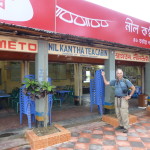
We were looking for a cabin, the Nilkantha Tea Cabin, but there weren’t any stand-alone buildings anywhere near the right address. Peddling slowly on our bicycles, we passed the crossroads, back and forth, hunting for the home of 7-layer tea.
When we finally found it, the cabin proved a lot more modest than the self-proclaimed hype around it. It was just one of several shops, at the center of a drab open-air strip mall. Filling out the line of shops were a couple of eateries, a convenience store and a few other small stores. But there it was, under an overhang that said “Welcome to Nlikantha Tea Cabin,” the celebrated birthplace of the famous tea.
In front of the stores, a large number of seats and tables were scattered about. Inside the tea cabin, dozens of wood chairs waited to welcome tea drinkers, but were empty except for one couple in the corner. At the right of the shop, an office desk laden with papers proved to be the headquarters of the operation as well as the place to make an order.
The walls were covered with pictures of unfamiliar notables who had tried the tea, often alongside the unsmiling inventor, Romesh Ram Go, plus documents suggesting how unique the tea was and how widespread its fame.
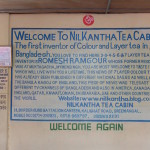
A large welcome sign and menu filled in the rest of the space. The sign made it clear that here we would taste the original 7-layer tea, an important issue in Srimangal as several other shops offer bad imitations of the same thing. Indeed, we tried another place and found its tea to be more of a mélange rather than 7 distinctive tastes like the one we had here. Even the cabin name gives a kind of warning about imitations: Nilkantha – or blue throat – is the name for the fancy colored bird, the Indian Roller, but also a name for the god Shiva, whose throat turned blue from a poisoned drink.
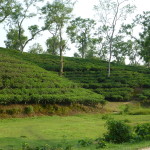
Tea in general here is serious business, as Srimangal sits in the center of numerous tea plantations and seemingly endless hillocks jammed with tea bushes. During our long bike ride through the area, we hardly ever got out of sight of tea leaves.
The welcome sign finished by touting the global fame of the authentic 7-layer tea as featured in TV broadcasts within Bangladesh and in a list of countries that featured America, Canada, England and several Arabic nations. “Welcome again,” it ended optimistically.
We pored over the menu. It helpfully listed the various layers and offered the cheaper two to six layer alternates, at ten taka per layer, as well as whole glasses full of the individual layers at ten taka each. We did not hesitate to blow the budget on the full 7-layer experience for 80 taka – about 1 US dollar. There was, however, no one to order from until the attendant emerged from a door behind the desk. We ordered, or at least we thought we did, in chunks of Bengali and English. We pointed at a white gazebo in the middle of the outdoor seating area and gestured for him to please bring the drinks out there.
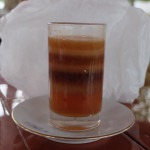
Then we waited, and waited, and waited for at least ten minutes, wondering if we had actually ordered anything – and also fretted whether the long walk to the gazebo would cause the 7 layers to become one. Finally, the attendant emerged from the back room with two tall glasses of tea on a silver tray. He was not very careful as he walked, swinging the tray vigorously as he hastened through the other seating. We could see the layers jiggle on the tray, but the layers didn’t mix. When he placed them on our table, they settled into distinct sections within the glass.
We decoded the layers before we drank. From the top: Hi-Special, whatever that is; Special Milk; Green Tea; White Tea; Ginger Tea; Red Tea; Lemon Tea. It was a marvel to look at and then…at last, a pleasure to drink as we carefully sipped thru the different tastes. The most distinctive flavors seemed to be the first, milky one, then the green tea and finally the ginger layer and the lemon.
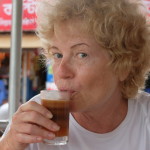
The layers began to mix as we drank, but we remained mystified about how the inventor could get them to stay separate in the first place, let alone floating and jiggling in tandem during delivery.
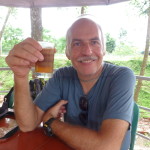
Just after our tea arrived, the seating area around us filled up as several Bangladeshi families up from Dhaka spilled out of a tour bus. Oddly most of them ordered Cokes from the store next door, not any of the teas.
We took the chance of ordering a second round, despite the crowd. After all we were unlikely to have another chance to enjoy such a unique drink.
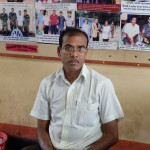
To our surprise, as the attendant made clear, the inventor – Romesh Ram Go himself – was at the desk. He still looked as dour as his photos on the wall, perhaps because there were not enough buyers about. He spoke no English, but we tried to let him know we liked his tea. And he tolerated our taking his photo at least, presumably because he was accustomed to fans of the tea treating him like a celebrity.
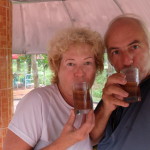
Knowing our second tea was under the right supervision, we waited again for the drink, suspecting that the process had to be done slowly to work. Eventually, the same attendant wiggled his way through the crowd, with the layers sloshing again, but this time even more clearly delineated than the first. We drank appreciatively.
A dollar goes a long way in this part of Bangladesh, but this unusual drink was well worth it – as was the trouble to find the famous “cabin” in its unassuming location.
(Also, for more pictures from Bangladesh, CLICK HERE to view the slideshow at the end of the Bangladesh itinerary page.)


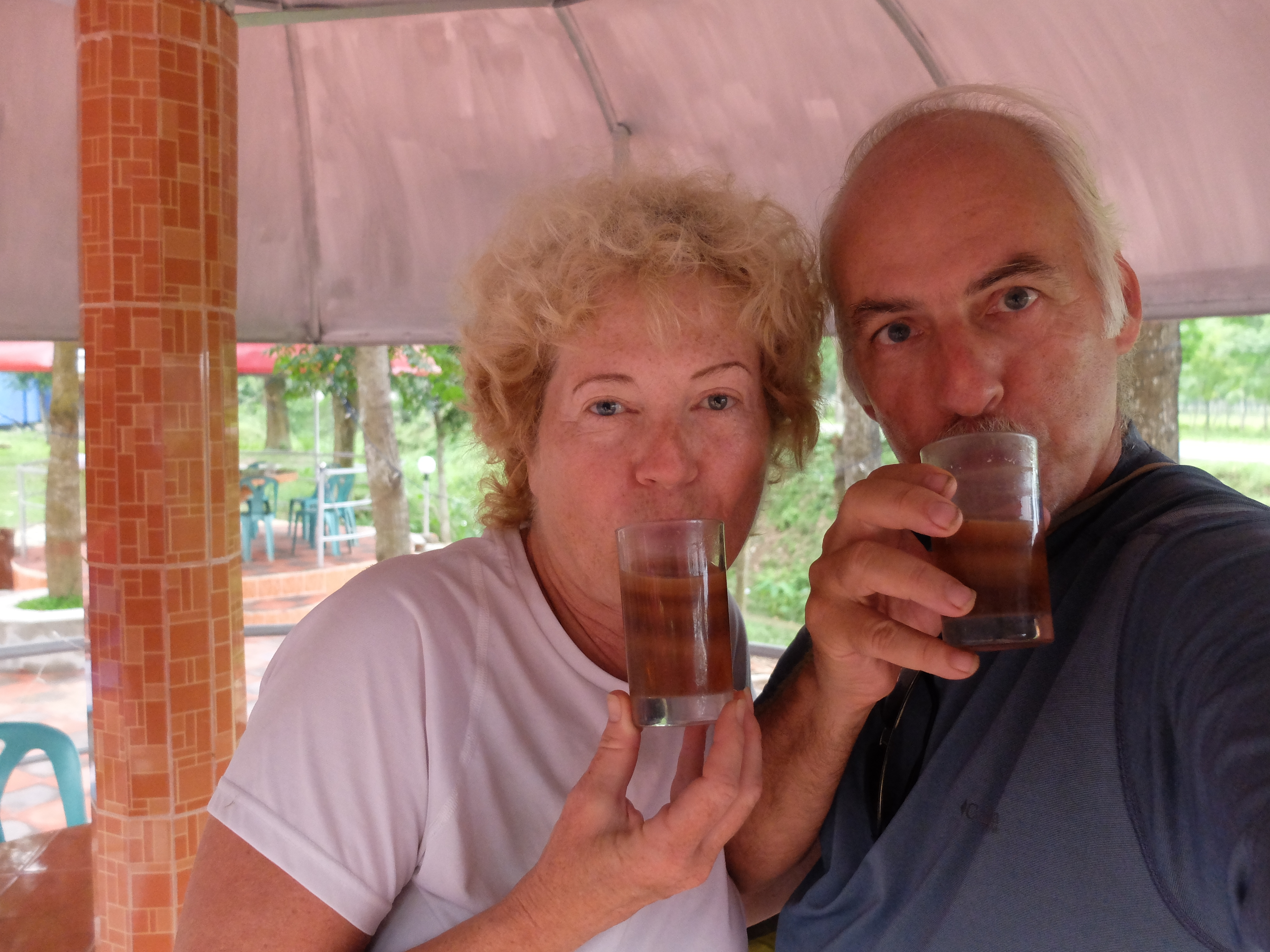
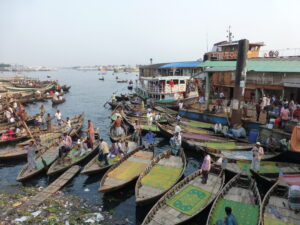
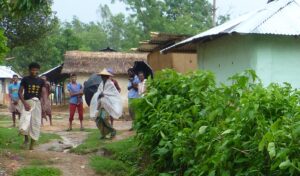
I don’t know if you meant to have this come up as the newest story, but I always liked that tea tale
We just re-told this tea tale, a return to earlier this year, so that’s why the story comes up first. Glad you liked it.